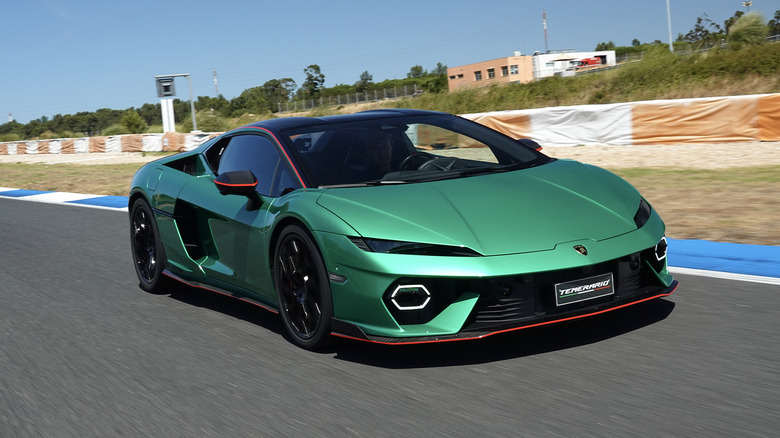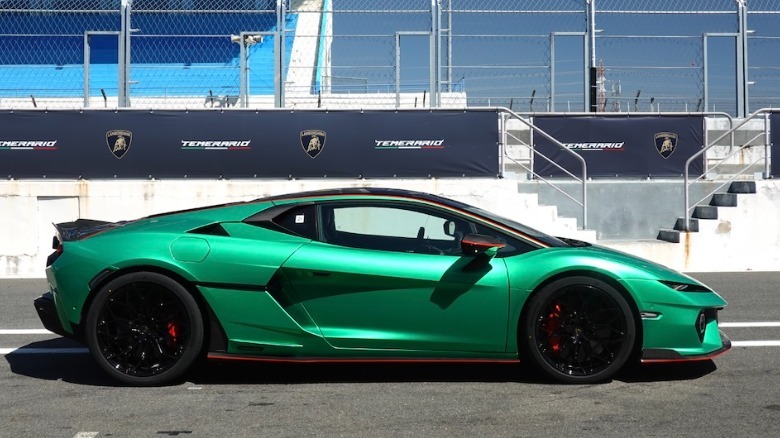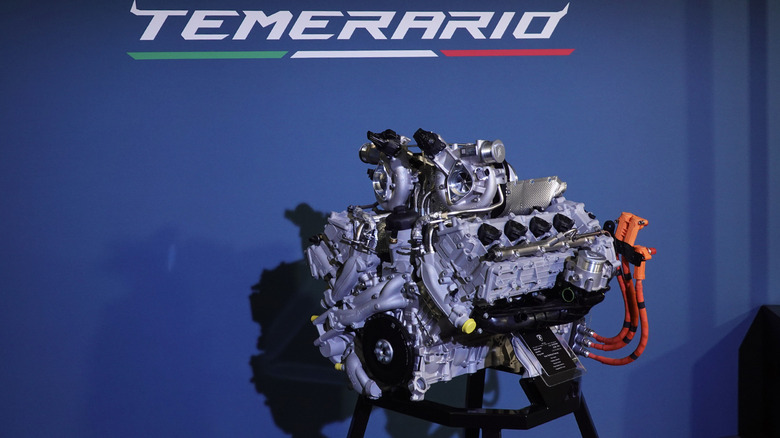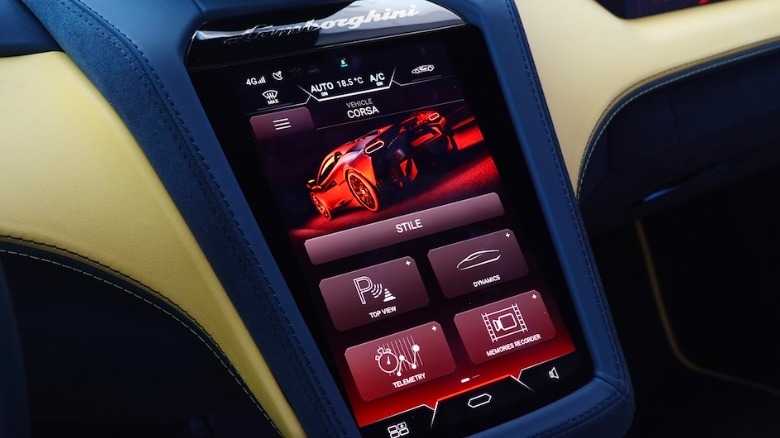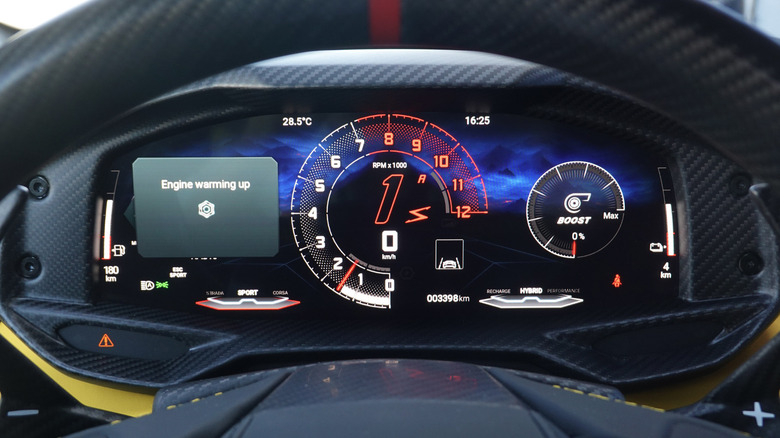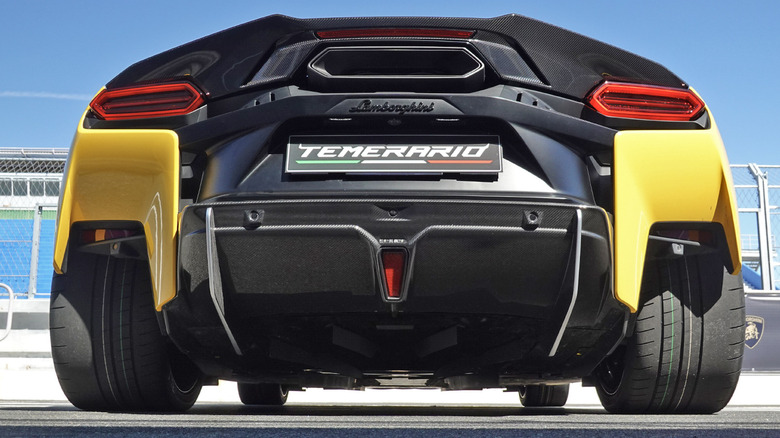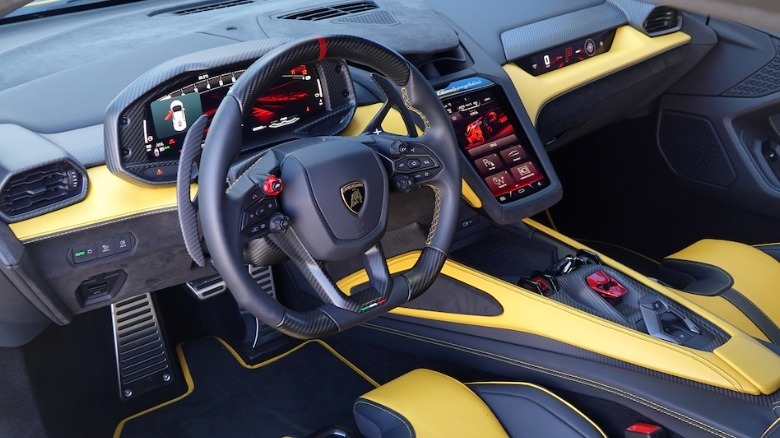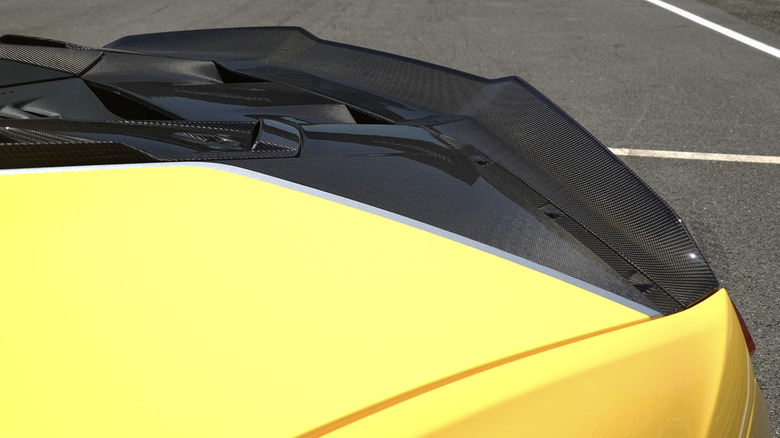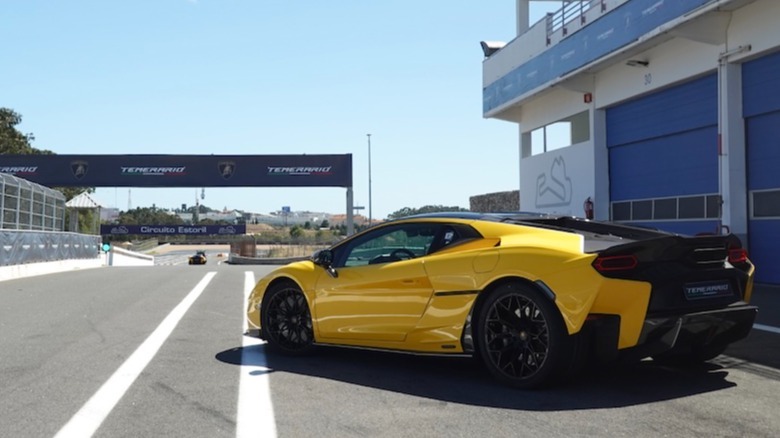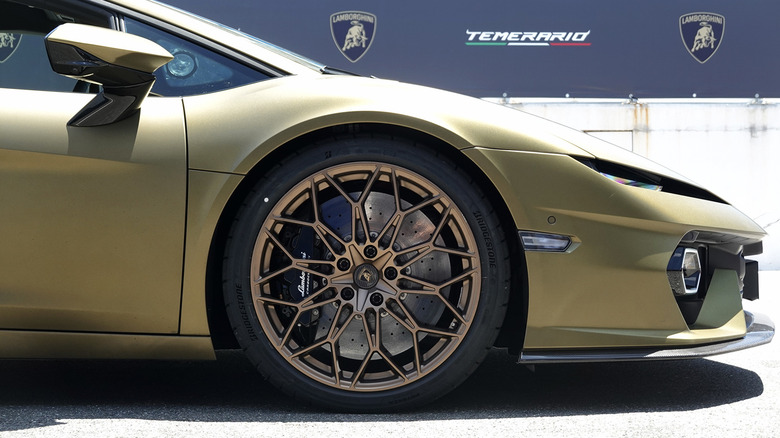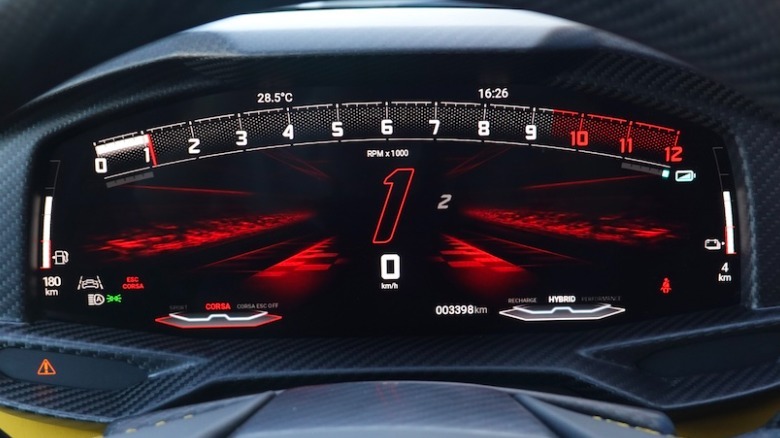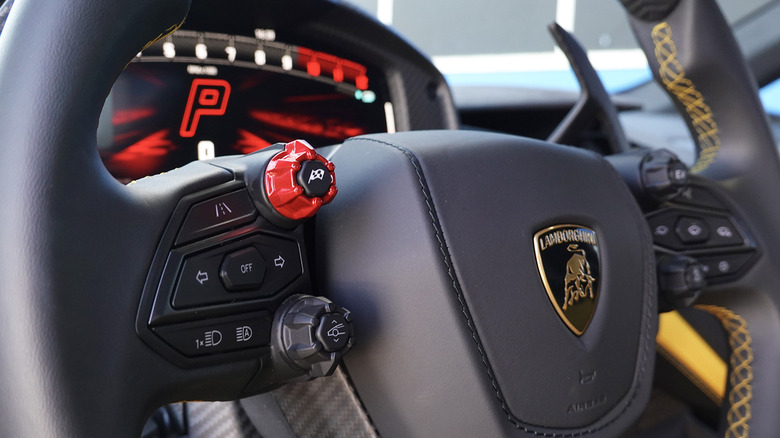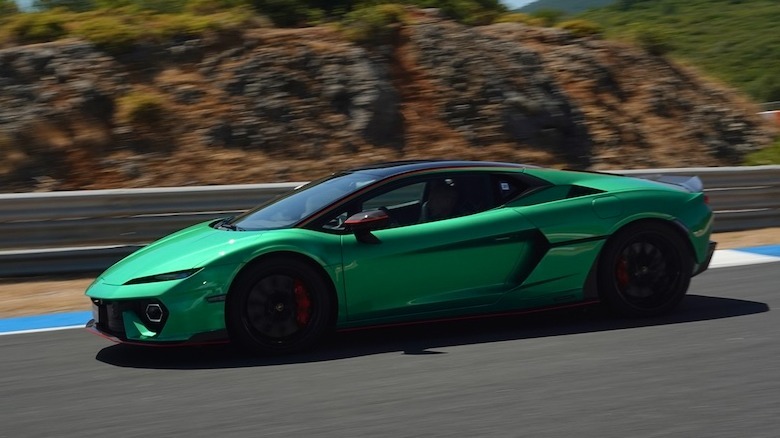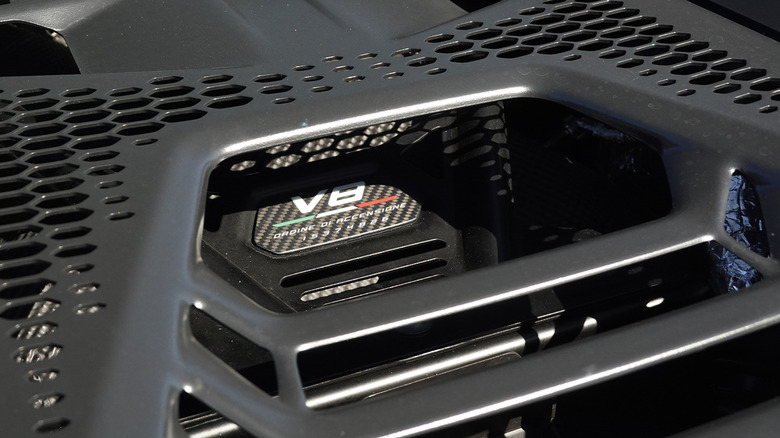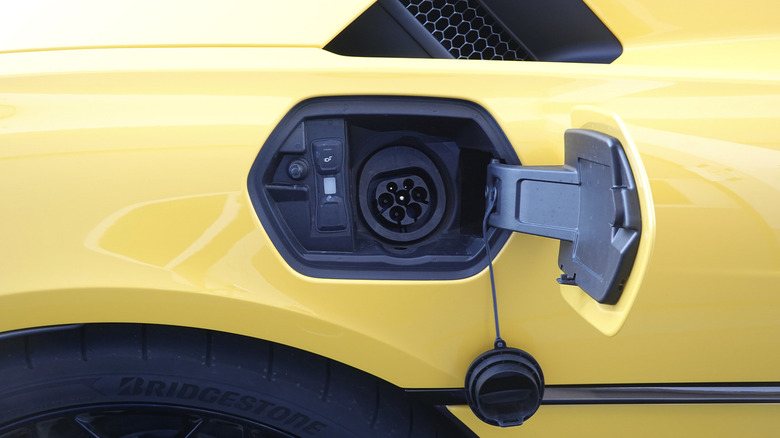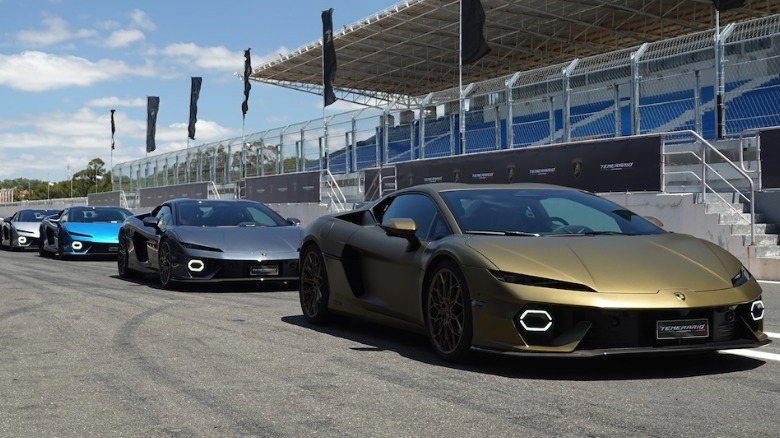Lamborghini Temerario First Drive: $385,000 Buys You A Whole Lot Of Drama
In this industry, I field the most obvious question all too often: "What's your favorite car?" Well, you gotta be more specific... And I mostly own old Mitsubishi trucks, an obsession most askers understandably might not fully comprehend. But if we're talking modern supercars, the answer's gotta be the hilarious, excessive, absolutely absurd Lamborghini Huracán Sterrato. Sure, a McLaren 750S can carve up a racetrack faster, the Ferrari 296 GTB looks better, and a Corvette ZR1 puts out way more power for about half the price. But nothing beats a naturally aspirated V10 in a mid-engined chassis with lifted suspension.
Or so I thought. Then this year, the Huracán's successor arrives with stats that truly border on mind-boggling. Try 907 horsepower out of three electric motors and a V8 engine with two 70-millimeter turbos that somehow still revs to 10,000 RPM. But deeper on the spec sheet, the Temerario (which starts at $382,654, though budget another $26,200 for some slick carbon rims) also adds weight to the tune of about 20% versus a Huracán, thanks to the hybrid powertrain but also a larger design with greatly improved creature comforts.
All of which made a journey to Estoril Circuit in Portugal all the more intriguing, since I simply needed to know whether anything can ever supplant the Sterrato from pride of place at the top of my equally absurd list.
Fun little details on an insanely complex engine
Plenty of other coverage took deep enough dives on the Temerario's ground-breaking twin-turbo V8, and this launch program intended more to provide an experience of the resulting performance from something so technically advanced. But Lambo CTO Rouven Mohr—another Mitsubishi guy—attended also, which gave me a chance to glean a few more salient details about the powerplant.
For one, the rear e-motor mounts on the crankshaft rather than inside the DCT, as for the $600,000+ Revuelto. First of all, this presented an additional challenge while targeting 10,000 RPM. But the huge turbos take enough time to spool up and build boost that the Temerario needed a bit of help filling in torque delivery gaps.
And in fact, the Temerario can actually rev up to 10,250 RPM in launch mode. More on that later, but such a stratospheric redline for a V8, and especially a turbo engine, makes very little sense. The Revuelto's V12 can't even spin so high, despite geometrically perfect balance of the rotating assembly! And yet, despite the similarities to Decuati's desmodromic valve actuation, the Temerario's engine stays maintenance free, meaning no prescribed service intervals for valve clearance checks. (Another fun detail: Lambo actually uses the same alloy for the Temerario's cylinder heads, built in the same foundry in Italy where Ducati builds the race team's MotoGP engines.)
Stunning power, punchy but not performative
Out on the track at Estoril, I quickly needed to put all of the above out of my mind and focus on comprehending the warps of time-space that every punch at the throttle pedal produced with ease. The Temerario simply delivers boundless torque at any RPM, then continues to rev effortlessly, to the point that I sometimes forgot to shift in my revelry of the steady, unrelenting power. Maybe a bit more quintessential turbo rush of torque swell might help to cue my brain, which undoubtedly struggled with sensory overload despite a restricted exhaust system that ends up much quieter than expected due to the turbos, catalytic converter, and particulate filter mandated by EU law.
Tuning the electric and internal-combustion components to work in harmony while mimicking the smooth power delivery of a naturally aspirated engine helps to reinforce the impression that the Temerario gained zero weight versus a Huracán. The steering similarly attempts to mask the mass, with minimal resistance to turn-in that borders on disconcerting at first. Think recent Audi electronic assist, and yet by a few laps into my first stint, the decision started to make at least some sense.
Light steering in quintessential rally car fashion
The Temerario never lacks precision, and though some steering feedback falls by the wayside, quick corrections and flicks of countersteer never get tiring. Just the opposite, I easily whipped around to catch little slides coming out of corners, in quintessential rally racing style. And even in just my first stint out on a new track, I set my own personal record for top speed in any car ever by cracking 300 kph on the speedometer. That translates to 186 miles an hour, for those keeping score back in the US of A, and about five mph faster than I hit at COTA in a ZR1.
But I must note that the Temerario is not light, however. Sharing all those hybrid parts with the Revuelto, plus the aluminum spaceframe and turbos and hosing, contributes to a claimed dry weight of 3,725 pounds. Or likely above 4,000 pounds when full of fluids and a journalist trying hard to hustle around a racetrack. Luckily, at launch, Lambo offers a lightweighting Alleggerita package ($49,113) that swaps on carbon-fiber wherever possible while increasing both downforce and aerodynamic efficiency. A titanium muffler shaves some further poundage, and new Bridgestone Potenza Race tires replace the Potenza Sports on the "base" car.
Alleggerita should mean better tires
From my second stint on, I drove an Alleggerita. And after my first lap in the Alleggerita, I never wanted to go back. The most noticeable improvement? Not aero or weight savings, but rather the tires. Steering communicativeness takes a significant step up, still light but infinitely more granular. Next on the list of pros, the titanium muffler turns the V8's soundtrack up a few notches on the volume dial—though aftermarket exhaust company CEOs better start ramping up development timeless, like yesterday, because every owner will want to tear out the particulate filter immediately.
Despite the improvements, though, I started struggling to keep up with my lead-follow instructor. He seemed to extend the gap coming out of each corner and especially on the straight. Of course, then at the end of four laps, he came over the radio and told me to switch into Recharge mode to let the electric motor pumps electrons back into the battery—and then I noticed that I'd been in Recharge the whole time, which caps peak power in the name of harnessing up to 100 kilowatts of regen. Oh well, this kind of tech requires a bit of a learning process, or maybe more focus from an amateur driver intent on not slinging a half-million-dollar supercar into a wall.
Eating up the track at Estoril
The next stint out—in Performance mode this time—I kept up with ease, now focusing on the Temerario's impressive braking. On the Alleggerita, I found a new level of effectiveness for trail braking that initiated rotation going into corners where the Potenza Sports simply started the slip-and-slide. Rally style brings out the smiles, but I wanted to keep finding more and more pace to further explore the Temerario's full capabilities, which I discovered ran deeper and deeper the further I dipped into the well.
Fully in Estoril's flow, I eventually set my own new personal best of 308 kph on the speedometer—and I suspect I left a fair amount on the table given the early point my instructor kept braking at, even if the reported top speed of 340 kph seemed out of reach. But finding so much pace also seemed to bring on one momentary transmission glitch, as I pushed hard past the gentle bend at Turn 5 and tried to shift from third to fourth, only to hit an invisible wall.
I glanced down and saw a big "8" on the dash, pulled the righthand paddle again and this time read "N" for neutral. After a frantic attempt to communicate with my lead-follow driver, I then tried to start downshifting to no avail, until all of a sudden everything went back to normal and the car drove perfectly predictably for the rest of the stint.
Drift mode, a cheat code for silly slides
Speaking of slip-and-slide, my lead-follow driver then climbed into the passenger seat to coach me through the use of a new-for-Lambo drift mode. Using a dedicated button and knobs on the steering wheel, Lambo's version of adjustable traction control prioritizes rear-wheel power delivery while using the front two e-motors to better hold slides via torque vectoring. I kicked off the demo in Level 2, and managed a little drift on my first attempt.
Second time around, I lost the thread and fully spun out by overcompensating with my steering input. Level 3 then let me more easily tame the tail end, counterintuitively, with a bit more throttle and more angle before the system started overcorrecting. I finally nailed a few solid drifts, just in time to try Launch Control.
All the modes, all the functions
Again, the system's intuitive setup required little in the way of conscious thought. Just push the putton, step on the brake and gas pedals simultaneously, watch the turbos spool up—though not quite to the max of 36 PSI—and then side-step the brake. Just make sure to pin your head back on the headrest, because the Temerario legitimately delivers the kind of whiplash that I typically experience only in the most hardcore electric vehicles. Perfect traction control, a quick chirp of tires, stunning acceleration, immediate torque and instantaneous gearshifts, unrelenting power all the way up well into triple-digit speeds.
Mohr also explained that the Temerario's electric motors never disconnect, either front or rear, which makes the top end all the more impressive. This kind of turbocharged performance, which spans a rev range wider than just about anything that's not a Ducati MotoGP bike, might just make the Temerario more potent even than the Revuelto. For my personal preference, anyway—even if I now need to rethink the Sterrato quandary, given the ability to hoon about in childlike glee on asphalt, if not in the dirt.
Lamborghini Temerario Verdict
Luckily, these kinds of thought experiments lead only to fantastical lands of imagination rather than potentially displacing a Mitsubishi truck's parking spot in the driveway of my funky little house. But the prospect of actually living with a Temerario certainly benefits from other carryovers that the Revuelto introduced, especially improvements to the interior ergonomics and Citta mode for those silent early morning startups.
Plus, the Temerario can soften up the adjustable dampers for cruising—though not as soft as a Sterrato, I strongly suspect—and Lambo will even offer ventilated seats now, while a charge port on the right flank rather than in the frunk like Revuelto leaves plenty of space for groceries or luggage. See, y'all, Lambo listens!
On a more serious note, at Estoril, Mohr repeated once again the depressing claim to not have started work on a Sterrato version of the Temerario. And I believed him, despite my eternal optimism. Part of the decision stems from leaving that unexpected in the past to open up the possibility of entirely new unexpecteds in the future. Regardless, with the Temerario, Lambo's hybrid era is now fully underway. More variants will certainly arrive, and given the widespread industry backtracking on full electrification, a solid chance exists that the Temerario's lifespan might well extend further into the foreseeable future. And I, for one, am all for it.
